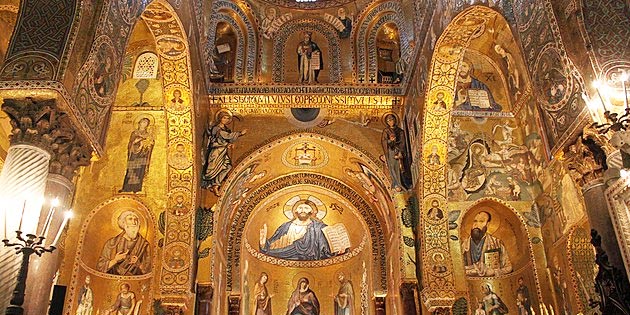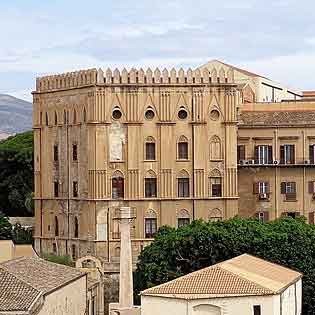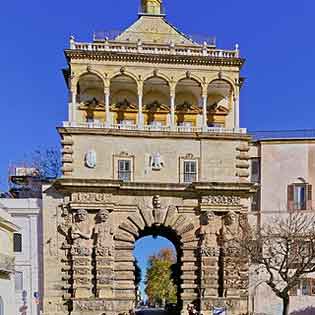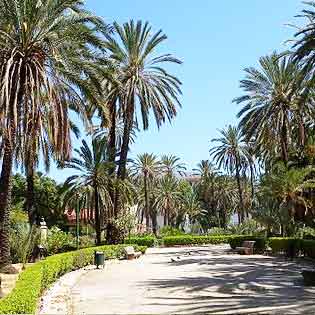Palatine Chapel

Liilia Moroz - CC4.0
The Cappella Palatina, that is the chapel of the Royal Palace, is located inside the Palazzo dei Normanni in Palermo. The Palatine Chapel, built in 1130 at the behest of Ruggero II d'Altavilla, the first Norman king of Sicily, is considered one of the best preserved medieval jewels in the world.
The exterior of the chapel was totally different from what it assumes today: almost nothing remains of its original facade because it is incorporated by other more recent structures. Originally the chapel stood isolated with the apse facing east as the Byzantine tradition dictates.
In the structure of the chapel it is possible to recognize two small churches: on the west side a Latin church divided by ten columns of granite in three naves, while to the east, in the presbytery, a small Byzantine church with a square plan surmounted by a hemispherical dome. The two religious components can also be seen in the inscriptions on the walls which are in both Greek and Latin. The presence of Arab culture is instead testified by the use of precious stones, such as porphyry, in the creation of the mosaic of the floor and by the presence of stylized palmettes on the walls, below the Byzantine mosaics.
In the realization of the chapel every detail takes on a profound meaning: the square shape of the presbytery represents the earth with its four elements, the octagon made in the drum recalls the number eight which represents the resurrection but also the universal judgment, finally the circle, which has no beginning and no end, represents God.
The Byzantine mosaics of the Palatine chapel are made up of two glass plates between which there is a very thin layer of gold, Arab, Norman and Byzantine artists contributed to their creation, thanks to the policy of tolerance adopted by Roger II.
In the drum the 4 evangelists and the prophets are represented, in the apse the Christ Pantocrator, that is the Lord of Creation, who blesses in the Greek way with his left hand while with the right he holds the book of the Bible in which is written in Greek and Latin: "I am the light of the world, whoever follows me will not walk in darkness but will have the light of life". Above the arch that precedes the apse the Annunciation is represented, on the left we see the angel Gabriel and a dove with a ray of light. We also find a representation of the separation of the earth from the sea: the terrestrial globe is represented as a sphere of water with three parts of the earth in the center representing the three continents then known: Europe, Africa and Asia, divided by strips of sea that form a Y, symbol of the trinity. Of value is also the scene of Adam's creation where we see a great resemblance between the face of God and that of Adam underlined by the Latin phrase: "creavit ominem at imaginem sua".
The Madonna, placed under the Christ Pantocrator , dates back to the Baroque period and was built to cover a window that had lost its function.
Unique in the world and of considerable importance and value is the ceiling, a Fatimite muquarnas ceiling, that is to say with cells. This self-standing structure is made up of very thin boards of Nebrodi fir. In the ceiling we find or 750 independent panel paintings representing the Koranic paradise: you can see trees, monsters, peacocks, eagles; men crouched with their legs crossed in the Muslim style, generally in the act of drinking or going hunting, fife, drum, castanets and harp players and dance scenes.
The monolithic candelabrum four meters and twenty-six centimeters high. This sculptural masterpiece in white marble is divided into five orders and rests on four lions that bite men and beasts; lions are the symbol of the Normans. At the center of the candlestick stands the eye of Christ, depicted with a beard, who sits on a cushion and holds a book, at his feet the figure of a man dressed as a clergyman, probably Roger II who commissioned the work.


